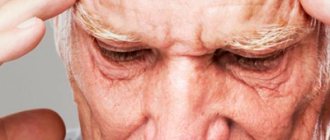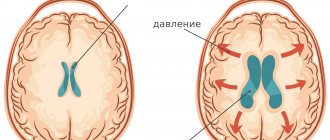Stroke is a dangerous disease with an acute circulatory disorder in the brain, which develops as a result of blockage of blood vessels or their damage. Most often it affects older people.
Stroke is the second most common cause of death after cardiac ischemia. Among diseases leading to disability, it ranks first.
If a stroke occurs, emergency medical care is required and should be provided within the first 3-8 hours. Even if help was timely and the patient survived, the consequences can be severe. Partial or complete loss of motor function, leading to disability, cannot be ruled out. According to statistics, about 80% of patients become disabled after a stroke, and a quarter of them require constant care throughout their lives. Only a fifth of all stroke survivors can return to relatively normal work activities after rehabilitation measures. Depending on the severity of the condition, the patient may be assigned disability group 1, 2 or 3.
New rules in 2021
Government Decree No. 92 of 02/01/2021 extended the temporary procedure for recognizing a person as disabled until the end of 2021.
At the same time, changes were made to the rules for conducting a medical and social examination (MSE) in absentia and the rules for recognizing a person as disabled in 2021 without being called to a commission. ConsultantPlus experts discussed how to apply for disability. Use these instructions for free.
to read.
Rehabilitation and monetary compensation
Disability is a special category given to a person who has had a stroke. With its help, doctors develop a rehabilitation program, and social security allocates funds for its implementation.
This program indicates that the patient is prescribed:
- Rehabilitation therapy . This includes: exercise therapy, massage, therapeutic exercises, physiotherapy, reflexology;
- Medications;
- Spa treatment;
- Self-care and professional skills training. Their choice depends on the health of the pensioner;
- Psychological rehabilitation . Usually these are consultations with psychologists and other specialists.
In addition, the victim has the right to receive monetary compensation from the state. Its size varies and depends on the stage of disability received. At:
- 1st is paid 3538.52 rubles ;
- 2nd is issued 2527.06 rubles ;
- The 3rd is paid 2022.94 rubles .
In addition to the general federal payment, a disabled person can also count on municipal and regional surcharges, which vary for different regions. On average, with all the allowances, the disability pension payment is commensurate with the subsistence level and minimum wage in the region.
When is it issued?
If a pensioner suffered a severe stroke and became temporarily unable to work, then he can contact social security with the question of when, after a stroke, he can apply for disability. Doctors recommend that all citizens apply for all necessary certificates within the first two months.
But remember that to receive disability, a pensioner will have to go to the hospital or stay at home for home rehabilitation.
Also, a pensioner who has suffered a stroke and undergone treatment at home can receive a disability group if this treatment did not produce improvement.
In addition, disability is assigned to citizens:
- Completely or partially lost vision;
- With impaired coordination and speech dysfunction;
- Those who have lost memory and sensitivity in the limbs;
- With greatly relaxed masticatory muscles.
Remember: if a pensioner cannot personally collect documents for examination, then his relatives or a person with a notarized power of attorney can do this.
If, as a result of the stroke, there was a slight impairment, and the state of health returned to normal, then in these cases disability is not issued.
Registration process
Initially, the patient should visit a neurologist. It is he who should give him a referral for examination to other doctors.
In addition, the patient will have to be examined by other doctors and undergo some tests. For example, he will need to pass:
- General and biochemical blood test;
- General urine analysis.
He will also need to undergo a diagnostic test. He needs to go through:
- REG of cerebral vessels;
- Electrocardiography;
- Computed tomography;
- Doppler ultrasound of blood vessels.
In addition, he must consult with:
- Ophthalmologist;
- Lorom;
- Gynecologist (for women);
- Surgeon;
- Therapist;
- A psychiatrist.
Having received a conclusion from them, the person with all the certificates undergoes a medical and social examination. This is where the stage of disability will be determined.
Remember: the conclusions received from doctors must be certified by the chief physician of the hospital. They must also bear the seal of the given medical institution. After this, the date and time of the person’s examination is determined.
Required papers
To undergo the examination, the patient will need to collect a package of documents. It includes:
- Application for assignment of disability;
- Referral from a physician;
- Conclusion from doctors and results of the examination;
- Medical card;
- General passport;
- A photocopy of the work record;
- A sick leave certificate or a certificate indicating that the citizen has occupational ailments.
Remember: if a person receives disability for the second time, then he needs to attach a previous certificate of disability and a rehabilitation program to the package of documents described above.
How is it assigned?
The medical commission makes a decision on assigning a citizen a disability as follows. Initially they examine the patient.
The inspection is carried out according to the following criteria:
- Can an individual take care of himself: is he able to go to the toilet on his own, prepare food for himself, clean up after himself;
- Is a person dependent on the people around him?
- How does the patient navigate in space?
- How appropriate is a person’s behavior?
Doctors also check the patient’s medical record. Using it, they look at what serious illnesses he previously suffered from, and whether he previously had similar disorders. The map also checks whether he suffers from:
- Arterial hypertension;
- Heart disease;
- Diabetes mellitus;
- Chronic illnesses that lead to disruption of normal human activities.
After studying all the documents and examining the victim, the commission makes an appropriate decision. If it is positive, then the person being examined is given a certificate of disability. This document specifies the group and its validity period.
Disability groups
Doctors divide disability into 3 main groups. They depend on the degree of damage to the body by the disease. Characteristics of disability groups:
- The first is the most severe and is issued to citizens with severe symptoms of the disease. For example, they move poorly and cannot speak. Experts consider such patients to be completely incompetent.
- The second one is also issued to patients with bright, but less pronounced symptoms of the disease. Despite problems with walking, spatial orientation, and speech, such patients can take care of themselves independently.
- Third , when mild functional impairments do not lead to disability, such disabled people can work under favorable working conditions.
A separate group of permanent disabilities is distinguished. It is usually issued to pensioners who have retired and cannot work full time. In social security, such patients can find out in advance whether it is possible to apply for disability after a stroke and how to do it.
How is disability registered for bedridden people?
Seriously ill disabled people often do not receive the required government support due to the fact that relatives do not know how to register disability for a bedridden patient after a stroke.
The scheme is quite simple. First, relatives of the disabled person need to contact their local doctor and get a referral for examination. Medical workers visit the patient at home. Specialists are called through the head of the medical institution.
Relatives can also temporarily admit the victim to a hospital. This will make it easier for him to get examined by the right doctors.
When the papers are collected, the relatives send them for a medical and social examination. Next, the bureau’s specialists must personally come to the patient’s home and conduct an examination. They then assign a disability stage to the patient and determine its duration.
When is the degree re-certified?
Remember: re-examination is carried out when the patient receives a group that is not included in the indefinite category. This is how specialists monitor his health and changes. Re-examination of patients in the first group is carried out 2 times a year, 2 and 3 groups – once a year.
Remember: if within 5 years a patient’s health status has not improved with the first and second groups of disability, then he is assigned permanent disability. Also, re-examination is not required for people who have retired due to age.
Possible reasons for refusal
There are times when a patient is not given a category. If this happens, he can re-submit an application to the medical and social bureau within 3 days. Within 1 month, specialists re-examine the patient’s case and make a new decision.
Sometimes a pensioner does not agree with the decision made by the bureau. He can also appeal it. This is done at the ITU Federal Main Bureau. Here, specialists must study the patient’s papers, conduct an examination and make a decision. In addition, the patient can appeal the decision made by the bureau in court. It is in the court office that a pensioner can find out in advance whether a pensioner is granted disability after a stroke, and how this happens.
To summarize: a stroke and associated diseases often make a person incapacitated. But not all citizens are assigned a disability group. Therefore, not everyone can count on compensation from the state. If a person plans to apply for disability after a stroke, he must provide proof of disability to the bureau. If he does not have such evidence, then disability will not be issued. A negative decision to assign a disability group can be challenged in court.
Legislative basis for establishing a disability group
The disability group is assigned based on the results of the ITU assessment of the degree of limitations in life activities due to disorders of body functions. The procedure is regulated by law and regulations of the Ministry of Labor and the Ministry of Health.
The conditions under which a person is recognized as disabled are listed in the table.
| Index | Signs |
| Health condition is impaired | Persistent impairment of body functions due to illness, injury, or defects |
| Life activity is limited | Complete or partial loss of ability:
|
| Need for social support | The need for rehabilitation or habilitation measures |
The presence of one of the listed indicators is not a sufficient basis for assigning the status of “disabled person”.
The Ministry of Labor, in letter No. 13-4/10/B-4132 dated May 29, 2019, explains the rules by which a person is sent for and passes the ITU examination. In addition, obtaining disability under the new law in 2021 is regulated by a number of regulations, including:
- Federal Law No. 181-FZ of November 24, 1995;
- Government Decree No. 95 of February 20, 2006;
- Government Decree No. 607 of 05/16/2019;
- Government Decree No. 92 of 02/01/2021;
- Order of the Ministry of Labor No. 1024n dated December 17, 2015.
Who is given disability
Not all stroke survivors can apply for disability. The group can be obtained strictly for medical reasons. It is prescribed in accordance with the Federal Law and its amendments based on the results of all necessary examinations. It is usually given to those patients in whom part of the brain has not fully recovered, movement, speech, and other functions are impaired.
- The first group is indicated for patients who have lost the ability to care for themselves and need constant help and care, as well as for those who can partially care for themselves, while they need to provide the necessary social and everyday functions.
- The second group includes patients whose dysfunction is persistent and severe, but they have not lost the ability to care for themselves.
- The third group is assigned to people with moderate impairments and moderate limitations in functions, which may subsequently disappear. In this case, the ability to work can be preserved, but some types of work are prohibited.
Conditions for assigning disability
Violations of body functions are expressed to varying degrees.
| Degree of expression | Scope of violation | Deviation range, % | Reason for violation |
| I | Minor | 10-30 | Diseases, injuries, defects |
| II | Moderate | 40-60 | |
| III | Expressed | 70-80 | |
| IV | Significant | 90-100 |
The necessary criterion for obtaining disability is a degree of severity of health impairment of 2 or higher in the range from 40 to 100%.
Depending on how severe the degree of deviation from normal functioning is, the following are provided:
- For adults - disability group (I, II, III).
- For persons under 18 years of age - the category “disabled child”.
Assignment to a specific group occurs after establishing the status according to certain criteria from Order No. 1024n. It contains a complete list of diseases for obtaining disability in 2021 for all groups.
| Disability group | Degree of expression | Deviation range, % | Reason for violation |
| I | IV | 90-100 | Diseases, injuries, defects |
| II | III | 70-80 | |
| III | II | 40-60 | |
| Disabled child | II, III, IV | 40-100 |
Diseases for group II
For group II, the indicator is a deviation from the norm of 70-80%. A person is able to perform simple actions (including resorting to special means or the help of other persons). He works despite physical or mental disabilities, but under special conditions. Among the diseases:
- fecal fistula;
- chronic pulmonary insufficiency or absence of one lung;
- irreversible visual impairment;
- cirrhosis of the liver;
- mental illness;
- skull defects;
- leg paralysis
Diseases for group III
It can be difficult to distinguish healthy people from group III disabled people based on external signs. Citizens with this group have the right to work, since the rate of loss of function is 40-60%.
Diseases for assignment to disability group III include:
- incipient cancer;
- absence of one eye;
- ptosis of one eye (permanent, persisting after treatment);
- bilateral deafness;
- jaw defects in the absence of the ability to chew;
- facial defects that can only be corrected through surgery;
- defects of the skull bones;
- paralysis of the hand or one of the limbs, causing muscle wasting;
- the presence of a foreign object in the brain after injury;
- installation of a foreign body in the heart area (pacemaker, artificial valve);
- amputation of the hand, one or more fingers;
- one kidney or lung.
Types of stroke
There are two types: hemorrhagic stroke and ischemic stroke.
Ischemic
This type of disease is the most common - about 80% of all cases. Most often occurs in older people. It is also called cerebral infarction. Ischemic stroke occurs due to impaired blood circulation in the brain due to narrowing of the lumen of blood vessels or blockage by blood clots. As a result, part of the brain is no longer supplied with blood and tissue death (necrosis) of this area occurs.
In a hemorrhagic stroke, a blood vessel ruptures and bleeds into the brain.
Hemorrhagic
It occurs from a rupture of a brain vessel. There are two types of hemorrhagic stroke: cerebral hemorrhage and subarachnoid hemorrhage.
The first is the most common and usually develops in people around 50 years of age. The main cause is hypertension, less often - atherosclerosis.
The second type is a hemorrhage into the space between the membranes of the spinal cord and brain, which contains the cerebrospinal fluid (CSF). Such a stroke can occur at the age of 30. Its main causes are arterial hypertension, smoking, alcoholism, and taking a large dose of alcohol at one time.
New procedure for passing the ITU
The current regulations reflect what new rules in 2021, when receiving a disability group, are followed by medical organizations, ITU and the Pension Fund. A medical organization, in a referral for medical examination issued to a citizen for the first time, indicates information about the results of medical examinations necessary to obtain clinical and functional data depending on the disease, reflecting:
- the citizen's health status;
- the degree of dysfunction of organs and systems of the body;
- state of the body's compensatory capabilities;
- carried out rehabilitation or habilitation measures.
In the initial referral to the ITU, they do not indicate the need for other medical examinations for citizens:
- having diseases, defects, irreversible changes or disorders included in the list approved by Government Decree No. 95 of February 20, 2006;
- sent to ITU for the purpose of developing an individual rehabilitation or habilitation program for a disabled person (disabled child) in the presence of previously conducted examinations within 12 months confirming diseases, defects, irreversible changes and the severity of dysfunction of organs and systems of the body.
The decision to establish disability (category “disabled child”) for the first time and to develop an individual rehabilitation or habilitation program is made by the ITU Bureau based on information about the citizen’s health status contained in the referral issued by the medical organization.
When can you apply for disability after a stroke?
Regeneration of damaged areas of the brain occurs individually for each patient. This depends on the type and severity of stroke, concomitant diseases (hypertension, atherosclerosis, diabetes), timely initiation of adequate therapy and the quality of rehabilitation treatment.
With a favorable course of the rehabilitation period, many brain functions lost as a result of the disease are restored. Disability after a stroke can be registered 4–6 months after the acute period of the disease, when the picture of the developed pathological disorders becomes clear. For non-working pensioners, the deadlines for applying for medical insurance are not established by law.
What does disability give?
Disability is the status of an individual, which is acquired in connection with deviations in his state of health, accompanied by a persistent disorder of body functions due to illness or injury. The law established a list of diseases for which the status of a disabled person is granted, and the rules for obtaining it. The status of a disabled person makes it possible to receive support measures established by the state - cash payments, free medicines, tax, labor or other benefits.
| Support measure | Characteristics | Base |
| Pension provision | Insurance part of the pension (if you have even 1 day of service without reference to age) | Art. 9 Federal Law No. 400-FZ dated December 28, 2013 |
| Social pension (in the absence of grounds for assigning insurance) | Art. 11 Federal Law No. 166-FZ dated December 15, 2001 | |
| EDV | Indexed annually. Installed when refusing a set of social services. The payment amount is:
| Art. 28.1 Federal Law No. 181-FZ dated November 24, 1995 |
| Set of social services | Prescription medications, sanatorium-resort vouchers by referral, travel by suburban or intercity transport to the place of treatment and back | Art. 6.1 Federal Law No. 178-FZ dated 17.97.1999 |
| In the world of work | Shortened working week - 35 hours (for grades I and II) | Art. 92 Labor Code of the Russian Federation |
| Length of working day, shifts according to medical indications | Art. 94 Labor Code of the Russian Federation | |
| Admission to night and overtime work only with the consent of the disabled person | Art. 96, 99 Labor Code of the Russian Federation | |
| Work on weekends and holidays in the absence of medical prohibitions | Art. 113 Labor Code of the Russian Federation | |
| Vacation at your own expense up to 60 calendar days per year at a time convenient for the disabled person | Art. 128 Labor Code of the Russian Federation | |
| In the field of education | Admission to universities according to a quota (disabled people of grades I and II, from childhood, with war trauma) | Art. 71 Federal Law No. 273-FZ dated December 29, 2012 |
| In the field of employment | Employer quotas for jobs | Federal Law No. 181-FZ |
| Tax | Deduction in the amount of 500 rubles. for each month of the calendar year in terms of income that is subject to personal income tax | Art. 224 Tax Code of the Russian Federation |
| Reduction of the tax base for land tax by the cadastral value of 600 m² of land area owned by a disabled person since childhood | Art. 391 Tax Code of the Russian Federation | |
| Exemption of disabled people from childhood from property tax (in part 1 of each type of taxation object) | Art. 407 Tax Code of the Russian Federation |
Instructions: how to apply for disability
New rules for obtaining disability have made the examination procedure simpler. Now the medical organization independently transmits the referral to the ITU electronically; citizen participation in the process is not necessary. The procedure became possible with the adoption of Government Resolution No. 607 of May 16, 2019. The Ministry of Labor of the Russian Federation, in letter No. 13-4/10/B-4132 dated May 29, 2019, explained the provisions of the new regulatory act.
Let's look at getting disability in 2021 step by step, taking into account the new rules.
Step 1. Receive a referral to ITU or a certificate of refusal to be sent to ITU.
A referral, subject to the consent of the person in writing, is issued:
- by a medical institution upon implementation of a set of measures, despite which persistent impairment of body functions persists;
- Pension Fund or social security - in the presence of documents that confirm deviations in functions due to illness, injuries, defects.
The referral to the ITU is transmitted to one of the specified organizations via electronic communication channels, or, if there are none, on paper.
Upon receipt of a refusal, a person is issued a certificate, in the presence of which he applies to the ITU independently.
Step 2. Prepare the required documents.
The following documents are required to complete the procedure:
- consent of the person in writing to conduct MSE;
- ID card or its certified copy;
- document proving the identity and authority of the representative (if the application is made through a representative);
- referral to ITU or certificate of refusal in such a referral;
- application for an ITU (when a citizen is issued a certificate of refusal to be referred to an ITU);
- medical documents that make it possible to establish the causes of disability;
- medical documents to determine the degree of loss of ability to work;
- conclusion of the medical commission of a medical organization confirming that for health reasons the citizen is not able to come to the MSA office, and therefore he requires MSA at home.
Step 3. Wait for the invitation to the ITU.
There is no longer any need to contact ITU. After receiving documents from the medical organization, the ITU sends an invitation to the patient, which indicates the date, time, and place of the examination.
Step 4. Go through the ITU and get a solution.
ITU pass:
- at the ITU bureau at the place of residence (place of stay), location of the pension case;
- at home if it is impossible to attend due to health;
- in a medical institution where the person is hospitalized;
- in the organization of inpatient social services;
- in a correctional facility;
- in absentia - by decision of the bureau.
Step 5. Obtain a certificate of disability and IPR.
A certificate confirming the established disability and IPR (rehabilitation program) is sent to:
- by registered mail;
- through the government services portal.
Surveys and documents
If the patient has suffered an ischemic stroke, then after discharge from the neurology clinic he needs to contact his doctor at the place of registration. Doctors at the Yusupov Hospital provide an extract from the medical history, which describes in detail the course of the disease, the results of examinations and tests performed, and also indicates in detail what medications the patient was treated with and what rehabilitation methods were used. At an appointment with a doctor at the clinic, you should talk about the existing problems and warn him about your intention to register for a disability group. In this case, the neurologist is obliged to write down everything in the patient’s medical record and give a referral to specialists: a cardiologist, psychiatrist, ophthalmologist and endocrinologist.
After this, patients undergo a full examination in the hospital. Doctors at the Yusupov Hospital use modern methods for diagnosing the consequences of ischemic stroke, which are accurate and provide the basis for obtaining a disability group. At the neurology clinic, patients undergo biochemical and clinical blood and urine tests and are examined:
- electroencephalography;
- electrocardiography;
- magnetic resonance or computed tomography:
- X-ray of the skull;
- Doppler ultrasound examination of the vessels of the neck and brain.
In order to undergo a medical and social expert commission, the patient must have with him all the certificates and documents that can confirm the impairment of neurological functions and disability. Experts must provide:
- referral of the attending physician to undergo a commission;
- passport, its photocopy of pages with personal data and registration;
- a copy of the work book certified by the HR department;
- income certificate if the patient works;
- outpatient card;
- an extract from the Yusupov hospital and a photocopy of it;
- application for examination.
When re-examination, it is necessary to prepare a certificate of disability received previously.











